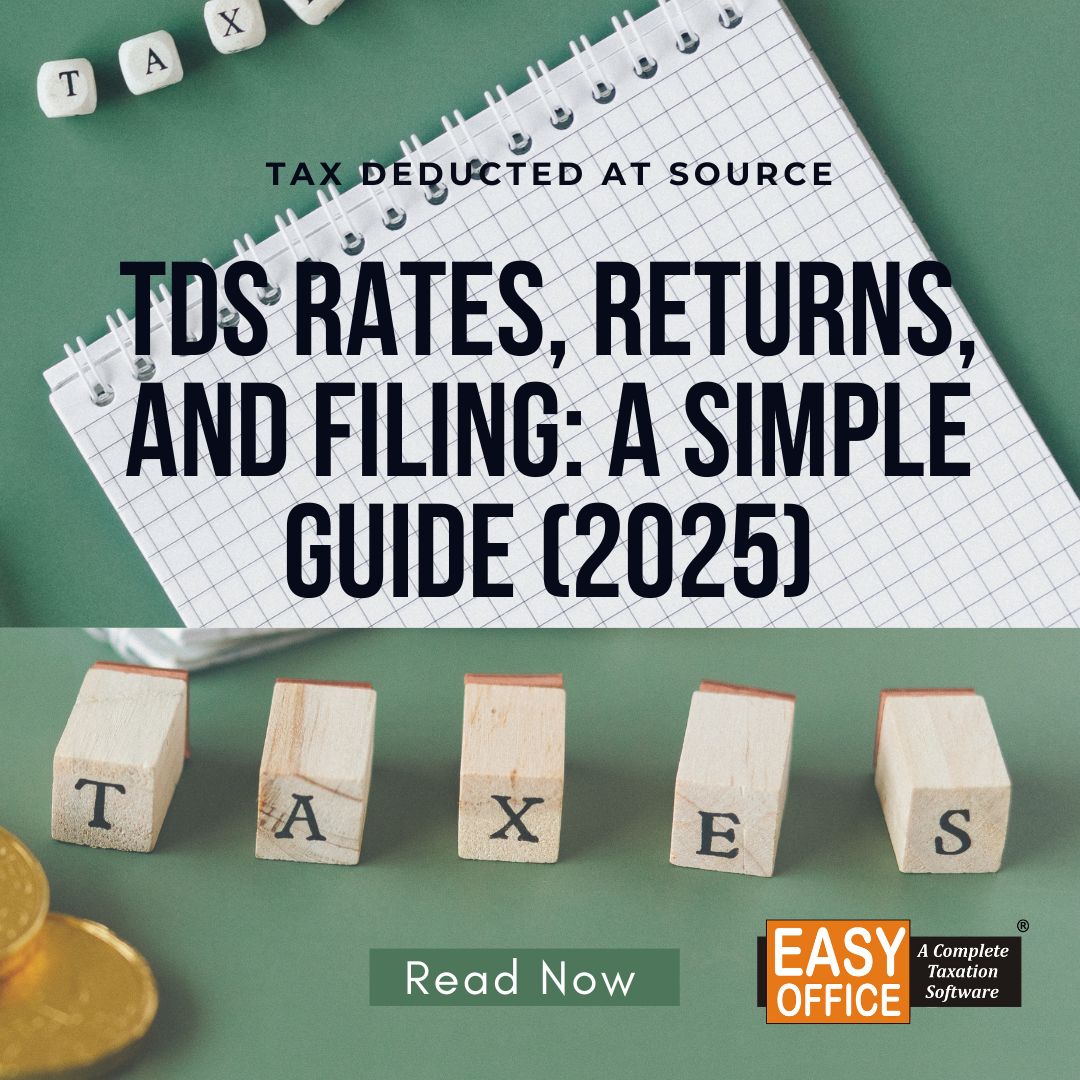
Special Offer For Practicing Chartered Accountant


Special Offer For Practicing Chartered Accountant


Understanding Tax Deducted at Source made simple - from basics to filing returns, everything you need to know about TDS compliance.
Understanding Taxes are like a maze with complicated rules and procedures, impossible to get. TDS or Tax Deducted at Source is a way of collecting taxes or ensuring compliance by making the whole process easier for everyone—from salaried individuals to businesses.
TDS works like a prepaid tax: it's deducted directly at the source of income such as salary income, rental payment, or interest earnings. The deducted amount is deposited with the government, helping ensure timely tax collection and minimizing the risk of tax evasion.
Wondering how it works? Let's check out TDS rates, returns, and filing process in a simple, step-by-step manner.
TDS is a system of advanced levying of taxes applicable on certain types of payments such as payments made through rent, salary, professional fee, interest and more. It is a system of collecting tax at the source of income throughout the year, rather than at the end of the financial year like regular income tax. It ensures a constant flow of revenue to the government, reduces the chances of tax evasion, and minimizes the burden of lump sum payments at year-end.
The deduction of the TDS is generally the responsibility of the payer at prescribed rates, for example, employers for salaried employees or banks for payment of interest or even individual (in specific cases).
At the time of payment or when the income is credited to the recipient's account, whichever is earlier
Income below taxable limits: No TDS deduction
Individuals/HUFs not under tax audit: Not required to deduct TDS (except rental payment > ₹50,000/month)
Submission of Forms 15G/15H: Can be submitted by individuals whose income is not enough to warrant a deduction of tax at source from interest on money deposited in bank accounts or for senior citizens
Proof of Investments: Employees can submit tax-saving investment proofs for a reduction in the Tax Deducted at Source (TDS) Liability
| Type of Payment | TDS Rate | Remarks |
|---|---|---|
| Salary | Based on slab | Employers deduct as per estimated income |
| Rent (₹50,000/month or more) | 5%-10% | Individuals not under audit deduct 5% |
| Bank Interest | 10% | Forms 15G/15H exempt eligible individuals |
| Professional Fees | 10% | Applies to freelancers and consultants |
| Month of Deduction | Due Date for Payment |
|---|---|
| April to February | 7th of the following month |
| March | 30th April |
| Purchase of Property | Within 30 days |
Depositing TDS is now made much easier with digitalization. To deposit TDS online, you have to visit the Income Tax Department e-filling portal. Here is a short walk-through:
Filing TDS returns ensures that the entire tax process is smooth and complete. It includes reporting all TDS collected and deposited in preferred form. Timely Return filing ensures proper tax credits in 26AS to claim deduction, avoid late filling penalties and be compliant with the laws.
| Form | Purpose |
|---|---|
| Form 24Q | TDS on salaries |
| Form 26Q | TDS on non-salaried income |
| Form 27Q | TDS on payments to non-residents |
| Form 26QB | TDS on property transactions |
| Quarter | Period | Filing Deadline |
|---|---|---|
| First Quarter (Q1) | April - June | 31st July |
| Second Quarter (Q2) | July - September | 31st October |
| Third Quarter (Q3) | October - December | 31st January |
| Fourth Quarter (Q4) | January - March | 31st May |
| Default | Penalty/Interest |
|---|---|
| Late deposit | 1.5% per month interest (u/s 201) |
| Late return filing | ₹200/day (u/s 234E, up to total TDS amount) |
| Incorrect filing / PAN | Penalty u/s 271H – up to ₹1 lakh |
By staying organized and adhering to deadlines, TDS filing can be a simple and efficient process. You can use the TDS return filing software to make the whole process easier and hassle-free.
TDS filing errors can lead to penalties and complications. Here's how to avoid them:
Filing TDS returns is easier and more accurate with dedicated TDS filing software. Get your TDS done correctly and hassle-free!
TDS rates, returns, and filing may seem confusing initially, but with the right tools and understanding, managing it becomes simple. Always verify deductions, file returns on time, and use TDS filing software to handle challan payments and return filings to avoid errors and penalties. Remember to check your Form 26AS regularly to ensure your TDS credits are correctly reflected.
No related blogs found!